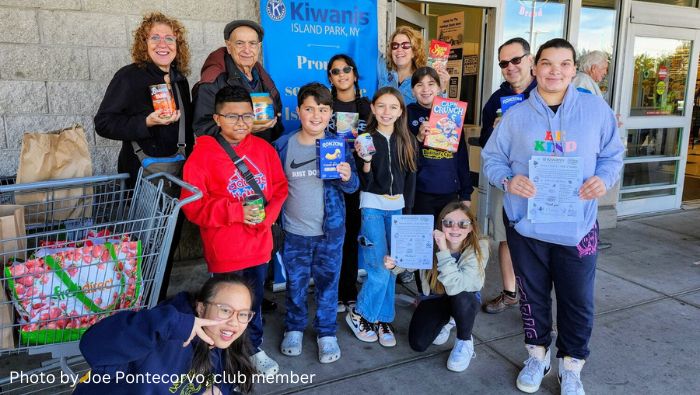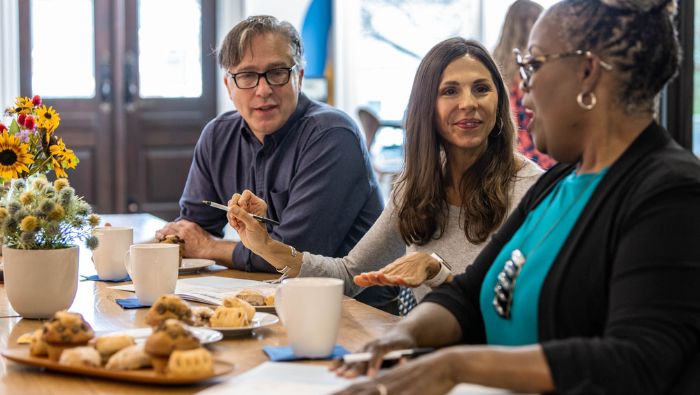
Back from the brink
A member shares one club’s steps from near-closure to growth.
By Seth Blau, Kiwanis Club of Island Park, Long Island, New York, U.S.
In September 2022, Karen Davis, president of the Kiwanis Club of Island Park, Long Island, was ready to close the club. After years of struggles, worsened by the pandemic, the club was down to five members — and two of those had moved to Florida, one split time between New York and Florida, and another traveled extensively for work.
And then there was Karen. In reality, she was the club’s lone active member.
At that time, I was concluding my second year as lieutenant governor of the Long Island Southwest Division in the New York District. When I called Karen to discuss the club’s future, she said that closing seemed like the only logical option. She worked in Island Park but lived in Oceanside, which had a thriving Kiwanis club. It simply didn’t make sense to keep a club alive in name only, without regular meetings or meaningful service projects.
I understood: What was the point of leading a service organization that barely existed? But I wasn’t ready to give up just yet.
The road back
I asked Karen to give it one last shot — six more months. I proposed a deal: If she agreed to stay on as president, I would join the Island Park Kiwanis club and help rebuild it. She agreed.
Momentum started to build. I quickly recruited a past president from a neighboring Kiwanis club who happened to live in Island Park and was willing to help. The next task for our little group was to reintroduce Kiwanis to the community.
The first steps were simple but crucial: We established a meeting schedule, mapped out a few manageable service projects and crafted a plan to promote our mission. Ultimately, we needed a “product” to sell if we had any hope of recruiting new members.
Shortly afterward, I ran into a newly elected congressman at a neighboring Kiwanis club’s pancake breakfast. He had been born and raised in Island Park, and he had heard about our efforts to keep the club going. Before I said anything beyond “Would you be interested in … ,” he had committed to joining. With that, the club had instant credibility.
Next, I turned to my own connections. As a school board trustee in Oceanside, I asked my superintendent to arrange a meeting with the Island Park school superintendent. Our pitch was simple but compelling: Kiwanis could make a real impact in local schools and the broader community.
The response exceeded our expectations. The superintendent not only embraced the idea but attended our next meeting — bringing along his assistant superintendent, a school principal, three school board members, the president of the teachers’ union and multiple PTA presidents. By the end of that meeting, most of them had joined the club.
Karen recruited several of her colleagues, using her own network as a teacher in the Island Park School District. Former members returned after hearing about the club’s resurgence. Within months, a club that had been on the brink of closure had grown from one active member to 26.
A thriving force for good
To solidify its revival, the club planned a pancake breakfast in April, held at the local elementary school cafeteria. It was a massive success. The community showed up in force and nearly every club member participated — as did the Builders Club that our Kiwanis club sponsors.
The event raised crucial funds — allowing us to support local causes, Kiwanis programs and neighboring clubs — and it inspired even more community members to join.
Since then, the Island Park club has remained strong at 25 members, including local elected officials, a few corporate members and a strong core of area residents. A club on the verge of dissolution is now a thriving force for good — proof that with dedication, teamwork and a bit of faith, even struggling organizations can find new life.
Your resources
Kiwanis International has resources for your club’s membership needs. Check out this blog post regarding Achieving Club Excellence tools for building a culture that keeps members engaged. And get five tips for regaining members. You can even find advice for hosting a pancake breakfast.
In addition to the Island Park club, Seth Blau is a member of the Kiwanis Club of Oceanside, New York, U.S., and 2024-25 secretary for the Long Island Southwest Division in the New York District. He is also the 2024-25 editor of the district’s newsletter.


